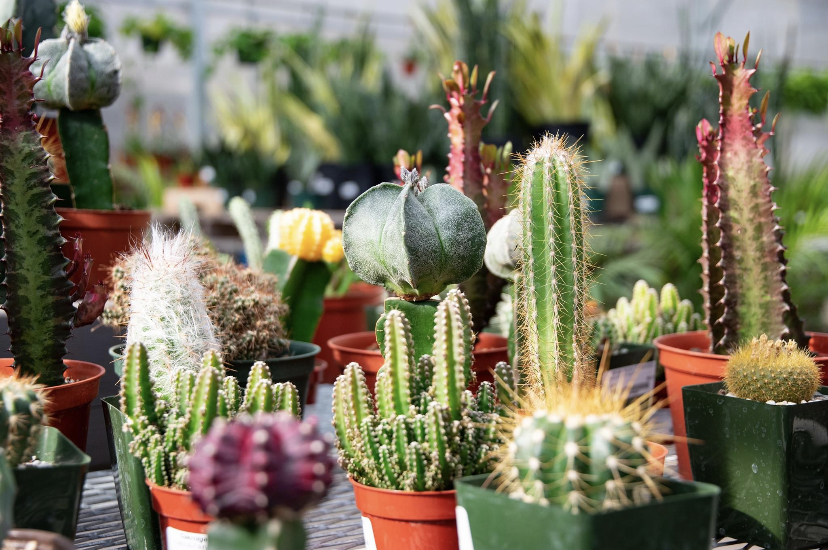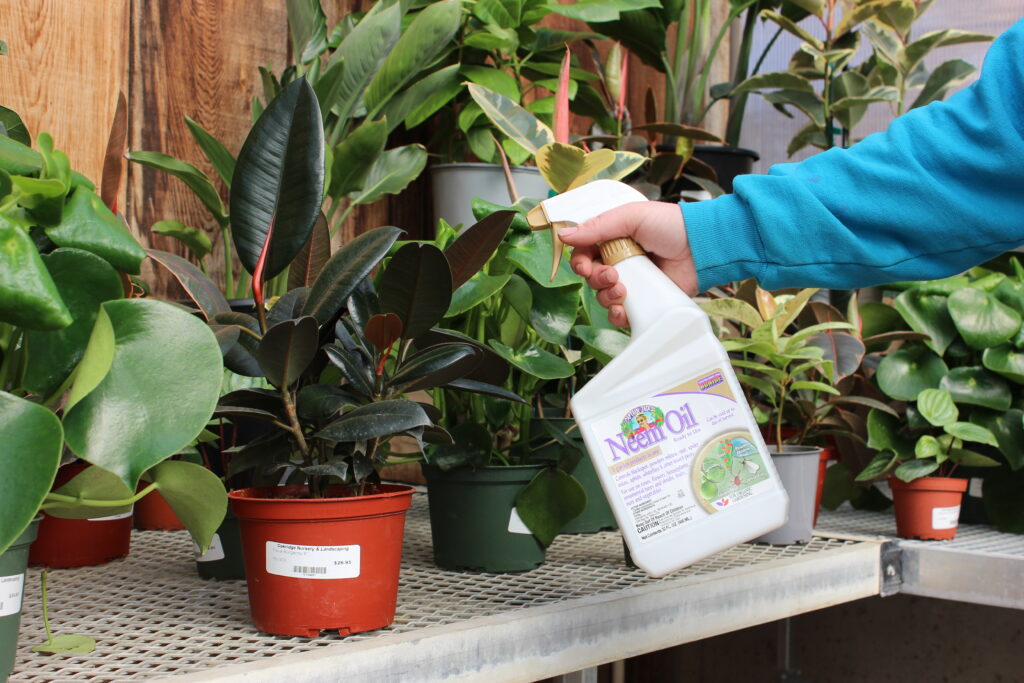After a warm summer season, any houseplant you may have had outside needs to be acclimated to your home’s temperature, lighting, and humidity. While you won’t kill your plant by just tossing it inside, acclimating it can help prevent shock and give you time to locate and treat any pests that may be tagging along.
Acclimating
Most houseplants, succulents, and cacti prefer to be kept in temperatures above 50℉, so it’s a good idea to keep an eye on the nighttime temperatures in the fall. If the nighttime temps begin to dip into the 50s, it is time to begin transitioning your plants indoors. It is recommended to begin adjusting your plants to indoor conditions over a 7-10 day period to prevent shock. On the first day, you want to bring your plant indoors in its designated spot for an hour or two before returning it back outside. You will then want to gradually increase the number of hours your houseplants are indoors every day. By the end of the 7-10 day period, your plant will be acclimated to its new environment and you can leave it in its spot all day long. As your plant adjusts to its new home, it is not uncommon for it to drop a few leaves.

Pests
While your plants were enjoying their time outside, some pests may have found a new home in your houseplants. These pests love to hide on stems, under leaves, or in small crevices so it is always a good idea to do a thorough check-through of your plant. Any visible pests should be treated before bringing your houseplants indoors to prevent bringing these pests into your home. Mealie bugs, spider mites, and aphids are some common pests that can be treated with neem oil, insecticides, etc. Even if you can’t see any pests, it is a good idea to treat your houseplants anyway to reduce the risk of pest problems during the winter. While pests won’t disappear completely after the first treatment, sticking with the product’s recommended treatment schedule and doing thorough check-throughs of your plant throughout the fall and winter is important to prevent any infestations.

Location
As we have fewer hours of sunlight in the winter, it is important to find the correct light requirements for your plant’s needs. Desert plants, such as cacti and succulents, will prefer bright direct lighting while other plants, like pothos and monstera, will thrive in more bright indirect light. It is important to familiarize yourself with your plants and their lighting needs. If there is not sufficient lighting, over time you will see plants start to get etiolated (pale and stretched out due to lack of light). If this happens, you can find a brighter location or you can supplement with grow lights. Not sure what kind of light you have in your house, check out our houseplant lighting guide.
Another thing to take into consideration when choosing your location is drafts and vents. It is best to avoid putting your houseplants near any drafts, doors to the outside, leaky windows, or vents as these places can cause temperature fluctuations that can stress your plants. This stress can lead to your houseplants dropping leaves and looking overall unhappy.
Adjust your watering
Now that the growing season is over, your plants will begin to slow their growth or even go dormant during the winter months. As the growth slows, your plant will begin drawing up less water and thus you will have to water your plants less often. It is always recommended to check your soil before watering instead of sticking to a strict watering schedule. Look out for common signs of over-watering such as yellowing leaves and fungus gnats. If you see these signs, allow more time between watering so that your plant can sufficiently dry out. As your plant’s growth slows it will also begin to take up fewer nutrients. Because of this, you can reduce your fertilizing over the winter months. You can either dilute your fertilizer or you can stop fertilizing until the spring months.


